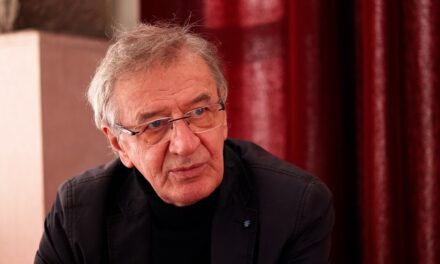Scientific research only makes sense if it can be carried out on a world-class basis with the highest international standards. The Laser Laboratory in Szeged, which is our "jewel", is an absolutely suitable location for this - said Ferenc Krausz, Hungarian Nobel laureate physicist living in Germany and director of the Max Planck Institute for Quantum Optics, in the M5 program Ez itt a químla.
Ferenc Krausz emphasized that even the richest countries with the strongest economies cannot really afford to be at the forefront of all scientific fields. Smaller countries can formulate this demand much less. In order for a country the size of Hungary to be able to carry out research that can be perceived and evaluated from abroad, it is inevitable to focus on certain areas, emphasized the physicist.
He added that the provision of appropriate resources does not automatically mean world class, for that infrastructure and personnel conditions are also necessary.
Ferenc Krausz said about his family background that his father worked as a bricklayer, and his mother also worked as a manual laborer in a factory and as a cleaner.
"I learned at home that you have to earn a living with work"
he said.
Recalling his studies, the Nobel laureate physicist said that he first fell in love with physics during the interesting classes of "Teacher Kiss" at Miklós Radnót Primary School in Mór, and later during the classes at Mihály Táncsics High School in Mór. After that, he obtained a degree in electrical engineering at the Budapest University of Technology, and then in Vienna, at my technical university there, he started working on laser physics. The results he achieved there laid the foundation for the later success of his research
he said, noting that he later continued his research in Germany.
Already at the beginning of the 1990s, his interest became the focus of his interest in the examination of smaller and smaller sizes in space and time using ultra-short light pulses. Ferenc Krausz emphasized that this was made possible by the femtosecond laser technology that was beginning to develop at that time.
The physicist recalled that his goal was to understand the unimaginably fast attosecond movement of electrons. As a result of this research, he and his research group produced and measured the world's first attosecond light pulses in 2001.
"The feeling one feels at that time was indescribable"
he said.
Ferenc Krausz emphasized that many serious diseases also begin with a certain movement of electrons. Their femtosecond and attosecond technology provides the basis for the new procedure, with the help of which they try to predict the development of diseases at an early stage.
He said that this is the goal of the project, as part of which a nationwide investigation is taking place in Hungary involving more than 10,000 people. In addition to traditional medicine, the program examines the blood samples of healthy people for several years with their own highly sensitive laser methods in the hope that, thanks to their method, individual diseases can be recognized at the molecular level even before symptoms appear.
One of the biggest and most difficult challenges in almost all areas of life is to find the right questions: this is extremely true for science and research, said Ferenc Krausz.
"Before we start doing anything in research, the first thing is to ask the right questions, which takes time and can even take years"
added the physicist.
Before becoming a researcher, spend enough time to decide with absolute certainty whether you will find joy in research. "Let's go where we see the path that fascinates us," advised the Nobel Prize-winning Hungarian physicist to the researchers of the future.
Ferenc Krausz received this year's Nobel Prize in Physics together with Pierre Agostini, a French physicist who teaches in the United States, and Anne L'Huillier, also a French physicist working in Sweden, according to the announcement of the Royal Swedish Academy of Sciences in Stockholm on Tuesday. According to the justification, the scientists received the recognition for their experimental methods of producing attosecond light pulses for the investigation of the movement of electrons within atoms.
MTI
Featured image: MTI/Zoltán Balogh













